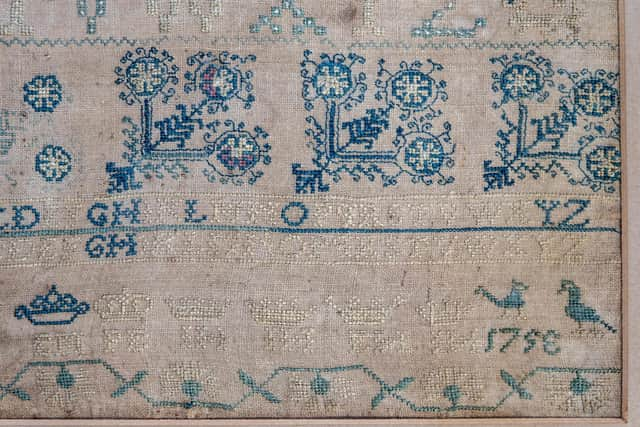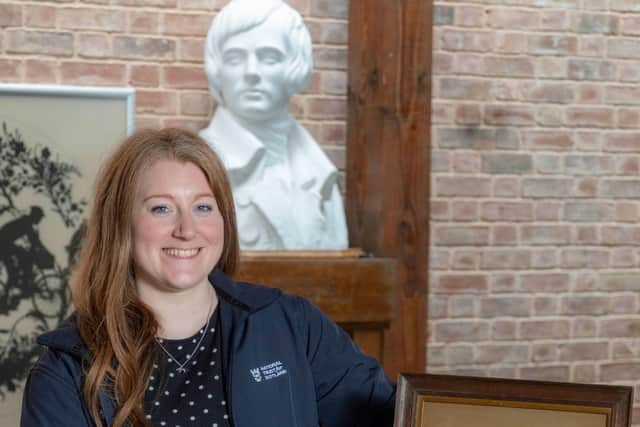Burns Night: Needlework samplers 'embroidered' by Robert Burns' mother and sister return to Scottish poet's birthplace
Two rare needlework samplers thought to have been embroidered by the mother and sister of Robert Burns have been returned to the poet’s birthplace, with support from a philanthropist in the US.
The two samplers, one attributed to the poet’s mother Agnes Broun and the other to his youngest sister, Isabella Burns (later Isabella Begg), had been held in a private collection in the south of England for many decades.
Advertisement
Hide AdAdvertisement
Hide AdHowever, with the support of American collector and philanthropist Leslie B Durst, conservation charity the National Trust for Scotland (NTS) has been able to bring them back to the poet’s birthplace in Alloway, South Ayrshire, to conserve them for the nation.


The samplers feature intricate embroidery of the alphabet, coronets, and floral and animal motifs. Their frames also tell a story, with handwritten labels providing insights into how the samplers passed from the Burns family into the ownership of the MacNaughtons in Dumfries.
Sarah Beattie, senior curator at NTS, which runs the Robert Burns Birthplace Museum in Alloway, said: “We don’t know of any other samplers embroidered by Agnes Broun or Isabella Burns, so these two works are very special additions to our charity’s collections and to Scotland’s Burns heritage.
“Samplers are an important part of Scotland’s social history, giving us insights into the lives, education, interests and talents of the girls and young women who created them. It’s wonderful to get new insight into the lives of Burns’s closest female relatives through the lens of these samplers.
“Most striking is the repetition of the stylised floral motif that appears towards the bottom of the larger sampler and on the left side of the small square sampler.


“The occurrence of this design across both textiles supports the provenance to mother and daughter, and it’s easy to imagine the young Isabella Burns unrolling her mother’s sampler and diligently copying the familiar patterns.”
NTS conservators are now working with textile specialists to assess the condition of the two pieces of needlework, before finalising plans for treatment and framing, so they can be safely displayed and shared with the public. The news comes as enthusiasts around the world prepare to celebrate Burns Night on January 25.
Ms Beattie said the labels on the samplers suggest they were given to Mrs MacNaughton, the wife of the Reverend George MacNaughton, by Isabella Burns Begg, the poet’s niece. Isabella died in 1886 so they were probably passed on in the early 1880s, after the MacNaughtons were married, although it is not known whether this was a gift or a purchase.
Advertisement
Hide AdAdvertisement
Hide AdBoth samplers featured in the grand Palace of History at the Scottish Exhibition in Glasgow in 1911, which showcased historic and cultural items from public and private collections across Scotland.
Ali MacLeod, NTS head of fundraising, said: “We’re very grateful to collector and philanthropist Leslie B Durst, who made it possible to secure two unique samplers for Scotland’s cultural heritage, in support of our charity’s vision of nature, beauty and heritage for everyone.”
Comments
Want to join the conversation? Please or to comment on this article.